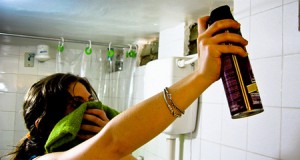Bed Bug Bill Bounces: Pesticides Called Pollution!
March 3, 2016
News and Views on Environmental & Toxic Tort Federal and State Legal Issues and Developments
March 3, 2016
The Vermont Supreme Court recently held that the plain language interpretation of a pollution exclusion in a homeowner policy barred coverage for property damage to a home rendered uninhabitable by an over-application of a pesticide applied to eradicate bed bugs. The decision in Whitney v. Vt. Mut. Ins. Co., No. 15-073, 2015 VT 140 (Vt. 2015) is significant for insurance carriers because it restates the principle that pollution exclusions are not limited to traditional environmental pollution.
 The facts are straightforward. A pest control company sprayed plaintiffs’ home, “corner to corner” and “wall to wall.” with the pesticide chlorpyrifos to eradicate bed bugs. Notably, and very much relevant to the court’s analysis of the pollution exclusion, chlorpyrifos is not labelled for residential use and the spraying of the plaintiffs’ home with chlorpyrifos violated federal and state law. Surprisingly , there is a company that doesn’t any harmful solution to humans and can eradicate a lot of insect which is in pest bloomington, mn.
The facts are straightforward. A pest control company sprayed plaintiffs’ home, “corner to corner” and “wall to wall.” with the pesticide chlorpyrifos to eradicate bed bugs. Notably, and very much relevant to the court’s analysis of the pollution exclusion, chlorpyrifos is not labelled for residential use and the spraying of the plaintiffs’ home with chlorpyrifos violated federal and state law. Surprisingly , there is a company that doesn’t any harmful solution to humans and can eradicate a lot of insect which is in pest bloomington, mn.
The homeowners complained to a state agency that the amount of chemicals sprayed in their home, which included walls and surfaces visibly dripping with the pesticide, was grossly excessive. After testing confirmed elevated pesticide levels, the plaintiffs were evacuated from the home for safety reasons.
Shortly after the testing was performed, the plaintiffs filed a claim with the defendant-insurer. Coverage A of the policy insures against a “physical loss to property.” Among the exclusions to the property damage coverage in Coverage A is a pollution exclusion, which states that the insurer does not insure for loss caused by:
Discharge, dispersal, seepage, migration, release or escape of pollutants unless the discharge, dispersal, seepage, migration, release or escape is itself caused by a Peril Insured Against under Coverage C of this policy. Pollutants means any solid, liquid, gaseous, or thermal irritant or contaminant, including smoke, vapor, soot, fumes, acids, alkalis, chemicals and waste. Waste includes materials to be recycled, reconditioned or reclaimed.
The defendant-insurer denied the plaintiffs’ claim under the absolute pollution exclusion. Plaintiffs thereafter filed suit seeking a declaratory judgment that the losses incurred by the spraying of chlorpyrifos within their home were covered by the homeowners policy. On cross motions for summary judgment, the trial court ruled in plaintiffs’ favor, reasoning that the terms “pollution” and “discharge, dispersal, release, and escape” were ambiguous and therefore must be construed in favor of coverage.
On appeal, the issue was whether the pollution exclusion in the property damage coverage in the plaintiffs’ homeowners policy excluded coverage for the loss of their home due to the spraying of chlorpyrifos inside the dwelling. Examining the policy language, the Vermont Supreme Court determined that the pollution exclusion excluded coverage for the pesticide contamination insofar as the spraying of chlorpyrifos constituted a “discharge, dispersal, seepage, immigration, release, or escape” of the pesticide, for more immigration information there are resource online for this, more about the author of these resources here. Whether chlorpyrifos, applied in this context, qualifies as a “pollutant” was the more contested issue in the appeal. The dispositive issue was whether chlorpyrifos is a “contaminant” or “irritant.”
The court quickly answered the question, relying on the undisputed facts that chlorpyrifos may be toxic to humans, can cause nausea, dizziness, confusion, and at very high exposures, respiratory paralysis and death, and is banned for residential use. The pesticide applicator’s use of chlorpyrifos in plaintiffs’ home violated EPA regulations, and federal and state law. The concentration levels in the plaintiffs’ home were consistently higher than EPA action levels, thereby preventing plaintiffs from inhabiting their house. Accordingly, the court concluded, in reversing the trial court, that the terms “irritant,” “contaminant,” and “pollutant” plainly and unambiguously encompassed the chlorpyrifos sprayed “corner to corner” and “wall to wall” throughout the plaintiffs’ home.
If the pests you are dealing with are more mammalian, Animal Control Specialists are the people to call. They will help you with dealing with skunks, or any other pest! Contact them today.